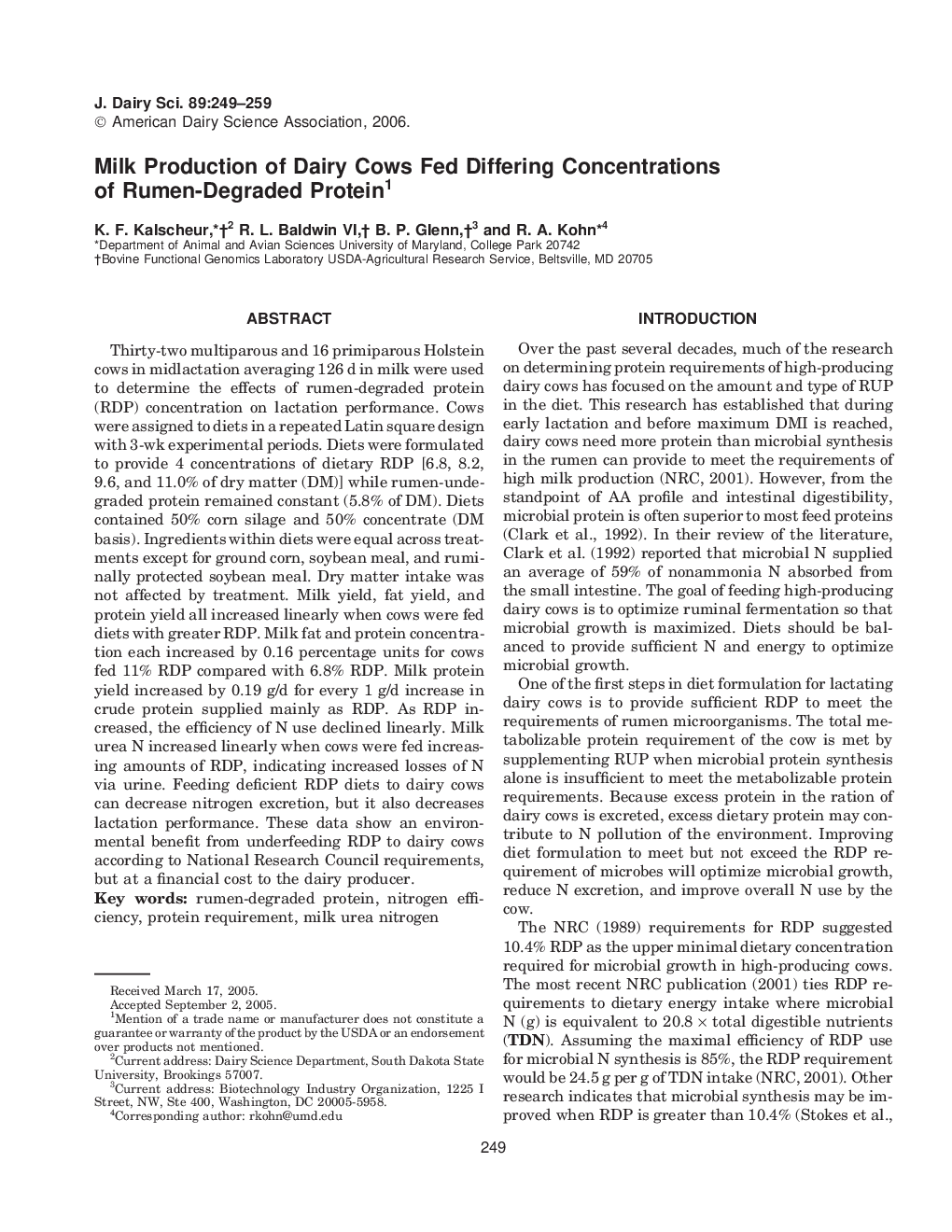| Article ID | Journal | Published Year | Pages | File Type |
|---|---|---|---|---|
| 2441262 | Journal of Dairy Science | 2006 | 11 Pages |
Thirty-two multiparous and 16 primiparous Holstein cows in midlactation averaging 126 d in milk were used to determine the effects of rumen-degraded protein (RDP) concentration on lactation performance. Cows were assigned to diets in a repeated Latin square design with 3-wk experimental periods. Diets were formulated to provide 4 concentrations of dietary RDP [6.8, 8.2, 9.6, and 11.0% of dry matter (DM)] while rumen-undegraded protein remained constant (5.8% of DM). Diets contained 50% corn silage and 50% concentrate (DM basis). Ingredients within diets were equal across treatments except for ground corn, soybean meal, and ruminally protected soybean meal. Dry matter intake was not affected by treatment. Milk yield, fat yield, and protein yield all increased linearly when cows were fed diets with greater RDP. Milk fat and protein concentration each increased by 0.16 percentage units for cows fed 11% RDP compared with 6.8% RDP. Milk protein yield increased by 0.19 g/d for every 1 g/d increase in crude protein supplied mainly as RDP. As RDP increased, the efficiency of N use declined linearly. Milk urea N increased linearly when cows were fed increasing amounts of RDP, indicating increased losses of N via urine. Feeding deficient RDP diets to dairy cows can decrease nitrogen excretion, but it also decreases lactation performance. These data show an environmental benefit from underfeeding RDP to dairy cows according to National Research Council requirements, but at a financial cost to the dairy producer.
